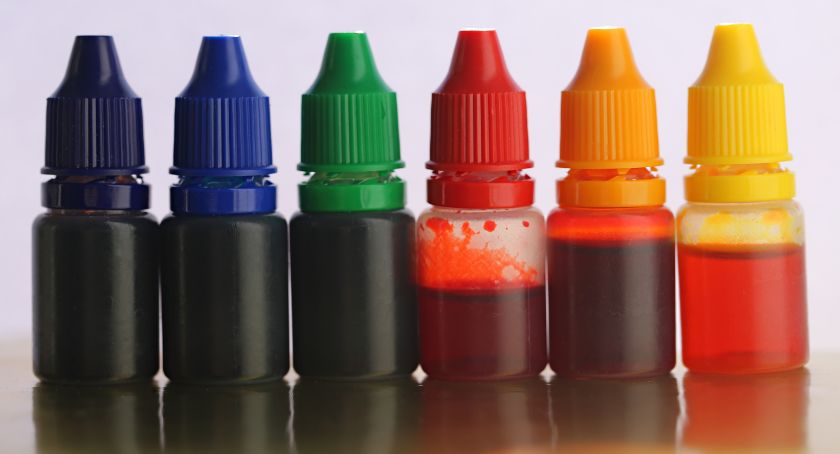Features
Colonizing the Probiotics Market
An expanding industry is becoming more sophisticated thanks to accelerating research.

By: Sean Moloughney

Better understanding of how microorganisms influence health, continued clinical research and increased consumer awareness of the value probiotics can afford have created a vibrant and innovative market for functional foods, beverages and dietary supplements.
Consumption of probiotic products is increasing globally, according to Scott Ravech, CEO, Deerland Enzymes, Kennesaw, GA, who cited a survey from Mintel that showed 19% of U.S. respondents who claim to have digestive issues take probiotics. Even 7% of consumers who don’t report digestive issues still say they take probiotics.
Sloan Trends Inc. Escondido, CA, reported that probiotics are one of the top selling supplements, up 23% in 2013 (Nutrition Business Journal, 2014). Sales growth was been strong, although is expected to be slightly slower in coming years—up nearly 22% from 2009 to 2013, the market is projected to grow about 16% from 2013 to 2016 (Council for Responsible Nutrition, 2014).
Both the functional food/beverage and supplement markets have profited from the growing popularity of probiotics. Last year saw more product launches and sales than ever before, Mr. Ravech noted.
Datamonitor Consumer, which was recently acquired by Canadean, predicted the probiotic food and beverage market will grow between 6% and 8% from 2013 to 2018.
Buyers & Drivers
In terms of a target audience, experts noted that while probiotics appeal to a broad and expanding demographic, women in particular seem to be top influencers.
“The mom consumer is in a lot of cases the immune consumer,” said Mike Bush, senior vice president, Ganeden Biotech, Cleveland, OH. “They want to keep their kids healthy; they want to keep them in school. We just finished a 1,000-person consumer survey. Across the board there’s a high level of interest in digestive health, from Millennials all the way to Baby Boomers. Probiotics seem to be cutting across all demographics.” Notably, probiotics score particularly high among Hispanics, he added.
Michael Shahani, COO, Nebraska Cultures, Inc., Walnut Creek, CA, agreed that the market overall is very hot right now. “More and more research is being published about the beneficial effects of probiotics, and consumers are more aware of what probiotics are and how to take them. Consumers seem to be looking for probiotics for children’s health and women’s health. Women seem to be the group most interested in probiotics for themselves, their children and their families.”
Deerland’s Mr. Ravech noted that women use slightly more supplements than men for almost all categories of specialty supplements, except sports performance. “Women are primarily interested in supplements that support immunity, energy, bone health, mental functions and sleep.” Men are most interested in heart health, he added. “Immunity is also a leading benefit that moms look for in buying supplements for their children, which helps drive their interest in probiotics.”
Consumers are bombarded by health challenges on a daily basis, and products that can support wellness offer significant value, according to Shaheen Majeed, marketing director, Sabinsa Corporation, East Windsor, NJ. “In view of the pressures of modern existence, the maintenance of a normal, healthy, balanced microbial population in the gastrointestinal tract is a difficult task.
Humans are often subjected to various stress conditions such as changes in food consumption patterns, vagaries of the weather, extensive travel and somatic diseases that necessitate treatment with antibiotics and immunosuppressive drugs.
“Under such adverse circumstances,” he continued, “the harmful bacteria may become predominant (a condition referred to as bacterial overgrowth) and create an imbalance, which may in turn impair normal gut function and lead to various problems, ranging from inefficient digestion, diarrhea, constipation and flatulence to severe gastrointestinal disorders. A logical approach to restoring the balance of intestinal flora is the use of naturally occurring microorganisms or probiotics.”
Mr. Majeed noted consumer interest across a range of ages, and awareness of benefits for children who may frequently be given antibiotics for common ear infections, students whose bodies may react badly to stress, adults who begin to feel the cumulative effects of abusing their digestive systems, athletes interested in all-around support and seniors who are not digesting food as well as they once did. “All of these population segments are aware of the benefits of probiotics,” he said.
Acknowledging strong market growth, Tim Gamble, president and CEO, Nutraceutix, Redmond, WA, said the industry appears to be maturing in some respects. “Over the last year or so, for the first time in many years, the industry seems to have taken a moment to stop the frantic pursuit of growth, take pause and reflect on what it takes to really make a good probiotic product. This is being driven—as is often the case in any successful category—by increased examination on the part of consumers, regulatory bodies and, particularly, quality-conscious brands and manufacturers who want to make sure that they, and the industry they are involved in, are doing things right.”
Mr. Gamble said probiotics span the demographic spectrum, and are consistently a top 10 sought-after supplement. “Probiotics have the advantage over many active ingredients in that they can be utilized therapeutically to address episodic conditions, and also as a daily maintenance product. Add to this that the safety profile of probiotics is extremely good, and you can see why probiotic demand is not relegated to any particular demographic.”
“We’ve all witnessed the tremendous increase in awareness of the benefits probiotics can offer for digestive health by helping maintain a healthy balance in the intestinal microbiota,” said Mr. Ravech. “In fact, accelerated product innovation and clinical research on the benefits of probiotics have created the momentum for an expected 6.5% CAGR in the probiotics market over the next five years.”
‘Clinical Revolution’
The entire supplement industry is going through what Mr. Ravech characterized as a “clinical revolution,” in which demand for clinical validation for dietary supplement products has never been higher. “The guidelines established by the Food and Agriculture Organization of the United Nations (FAO) along with the World Health Organization (WHO) provide a superb ‘checklist’ for evaluating probiotic supplement products.”
Genome Sequencing: Proper identification to the level of strain of all probiotics in the product, with deposit of all strains in an international culture collection.
Physiological Testing: Characterization of each strain for traits important to its safety and function.
Clinical Studies: Validation of health benefits in human studies, including identification of the quantity of the microorganism required to provide the benefit.
Stability: Truthful and not misleading labeling of efficacy claims and content through the end of shelf life.
“The research and development team at Deerland used these guidelines in the development of the company’s latest probiotic product, a strain of Bacillus subtilis called DE111,” said Mr. Ravech. “This particular strain has been fully genome sequenced and uploaded to GenBank, the National Institutes of Health genetic sequencing database. Physiological testing and a human clinical study have been performed to demonstrate the strain’s ability to control microbial populations in the gut and maintain general health. Stability studies show that this spore-forming probiotic remains viable under a wide temperature range and doesn’t require refrigeration.”
“In today’s market, having results from human clinical trials is becoming more and more important,” said Mr. Shahani of Nebraska Cultures. “Especially for products being marketed in Canada or the EU, having human clinical data is practically essential. In addition, techniques for identification and enumeration of probiotic and other bacteria have become more refined, and this has led to the re-classification of some strains.
He also noted some companies are successfully promoting new delivery forms. “Any technology that can help the probiotic bacteria survive longer storage or harsher manufacturing conditions would also be very useful.”
Mike Petteruti, vice president, Gnosis USA Inc., Doylestown, PA, said understanding how microbial makeup impacts health, beginning at birth, has become clearer thanks to ongoing research. For example, studies have shown children born naturally through the birth canal vs. cesarean have a different microbial makeup, which seems to impact the likelihood or incidence of asthma.
Today, there’s a real opportunity to balance the microflora of those children through supplementation, said Mr. Petteruti. “I see the opportunity being very broad. I think we need to help the consumer understand where to apply which product instead of solving all problems with a silver bullet. I think we’re moving away from this as an industry. We can tailor products and guide consumers to a better experience with certain probiotics.” This condition-specific approach to probiotic supplementation may work best through the healthcare practitioner channel, he added.
Other unique opportunities may include combining probiotic strains together and/or with other nutrients. “Discovering benefits of combination products—similar to putting different vitamins and minerals together in the right matrix with the right delivery system—can be revolutionary,” according to Mr. Petteruti. “I imagine there are opportunities for combining certain microbes that would offer real, measurable benefits. We are examining some areas where you can combine our probiotic with other nutritional components to address some pretty well known and serious health related issues. There are some unique things happening that could be advanced by looking at combinations of microorganisms and also microorganisms with other nutritional components, whether through traditional oral supplement dosing or functional food applications—or even the medical food applications.”
Mr. Gamble noted a shift toward “more scientifically accurate research that, particularly for dietary supplements, supports the chain-of-science from culture (of course) to the physical format, and even packaging. Without this attention to detail at the research stage, it becomes difficult for brands to confidently draw from that research to make supportable and defensible claims that will facilitate sales at retail.”
Over the last few years, Nutraceutix has worked with multiple research projects and principal investigators to develop products for their research that leverage state-of-the art processes and technologies that helped optimize outcomes for their specific research objectives, he added, while doing so in a dose and format that is commerce-ready.
“As elementary as it sounds, it is actually this latter part that is evolutionary,” said Mr. Gamble. “Two examples are the Immunobiotix probiotic studied at Bastyr University and the Lactobacillus reuteri product studied at the German Diabetes Center. Both of these were formulated with Nutraceutix strains, produced and then administered in Nutraceutix’s patented and well-established BIO-tract caplet format. With positive outcomes in research projects like these, brands can confidently market products in the exact same formulation and format as that which was studied, rather than a derivative or approximated work. Careful consideration and adoption of this solid chain-of-science from research to store shelves is helping research in this space evolve as it should.”
According to Ganeden’s Mr. Bush, “There’s so much going on in the gut, there’s almost an endless supply of clinical end-points that people are looking at.” Investigations involve mood, obesity, metabolic syndrome and even strains specifically for people with kidney failure, he added. “The sky’s the limit when it comes to what people are finding out about the gut.”
For example, recent research has shown that Ganeden BC30 (Bacillus coagulans GBI-30, 6086) supports protein utilization as measured by a reduction of muscle soreness and increased perceived recovery.
Importantly, Mr. Bush noted that overall, “clinical efficacy is on the strain level. It’s common knowledge within the industry, but it’s finally becoming more common knowledge with consumers. There is still a lot of work to be done when it comes to consumer education,” he added.
According to Sabinsa’s Mr. Majeed, some consumers are more comfortable with and accepting of functional foods than dietary supplements. “Some people do not accept that we are susceptible to numerous lifestyle disorders that require the intake of dietary supplements. However, a consumer finds it relatively more comfortable to pick up functional foods for the same benefits. The challenge remains in the fact that incorporation of required dosages of probiotics for potential benefits has to be done while retaining the appealing flavor of the food.”
The greatest challenge with probiotics is their stability, he added. “Since they are living organisms, they may be sensitive to a number of physical and chemical parameters such as pH, temperature and enzyme activity, which are vulnerable to processing, storage and handling.” Sabinsa’s LactoSpore is a versatile microorganism, originally known as Lactobacillus sporogenes (Bacillus coagulans). LactoSpore produces L(+) lactic acid and grows in the temperature range of 35°C to 50°C and the optimum pH range is 5.5-6.5.
Probiotics such as Lactobacillus and Bifidobacteria have been well studied, and the science is supportive of the benefits of these non-spore probiotic strains, noted Mr. Ravech. “Since different strains offer specific benefits, our customers are increasingly seeking a multi-strain formulation of both non-spore and spore forming probiotics. Based on this demand, more science is emerging to support the benefits of spore forming probiotic strains, such as Bacillus subtilis. Deerland Enzymes has genome sequenced for safety and clinically tested for efficacy DE111, a highly effective strain of Bacillus subtilis, a very stable probiotic spore that supports digestive health and works as a complement to many of the non-spore strains that are also available. The genome sequencing confirmed the strain contained no plasmids, antibiotic resistant or deleterious genes. The human clinical study showed the strain’s ability to control microbial populations, aid in digestion and maintain general health.”
In addition, research has shown that there are certain prebiotics that can increase the benefits of probiotics, he said. “However, these fiber-based prebiotics often come along with several drawbacks. In response to this growing trend, Deerland Enzymes’ research and development team recently introduced a unique prebiotic that is not fiber or starch based, is highly effective in small doses (15 mg) and does not exhibit any of the drawbacks of more commonly used prebiotics. This patent-pending product, called PreforPro, is backed by both in vitro and in vivo studies that demonstrate its superiority to the typical prebiotics that have been used to date.”
Innovation & Future Expectations
At Sabinsa, Mr. Majeed said, “innovation is our tradition. We are constantly involved in innovating quality ingredients for nutraceutical and cosmeceutical applications. We also constantly challenge ourselves to find newer applications to our existing product line for increasing the benefits for wider use. This philosophy informed the design of LactoSpore as a shelf-stable probiotic. Probiotics and the knowledge of their applications is gaining momentum among consumers, with great safety and efficacy. Lifestyle patterns demand the use of probiotics and thus the future holds a very good promise for probiotics.”
Mr. Gamble said Nutraceutix continues to innovate when it comes to ways to make probiotic dietary supplements more effective, regardless of the strain or strains involved. “Innovation is occurring in research, it is happening in strain isolation, and in the identification of strain mechanisms of action. It is even occurring in packaging and distribution.
“I have high expectations for the probiotics market and high expectations that those of us who are key players in supporting and promoting it will continue to focus on credible, well considered research, meaningful innovation, quality manufacturing and trustworthy marketing,” he added.
Nebraska Cultures’ Mr. Shahani predicted the probiotic market will continue to grow for the foreseeable future, especially in the next 3-5 years. “We expect to see new products and technologies that improve probiotic performance. We also feel that the FDA will take a closer look at companies making false or misleading claims for probiotic products,” he warned.
“I believe there’s a huge opportunity for investigating and then managing the intestinal flora in a way that helps optimize either simple digestion and/or supplementation,” said Gnosis’ Mr. Petteruti. “In other words, is there a way of using a probiotic to help someone absorb folates more effectively from the food that they eat? I think there is a real opportunity to help people—and certainly in the U.S. our diet is a mess—if we could identify and use probiotics in a way that helps us improve the utilization of food we eat, or should be eating.”
As the market progresses, there will be a more clear and thorough understanding of the role of probiotics in health and disease, said Deerland’s Mr. Ravech. This will include knowledge of how the microflora can be controlled in order to prevent or cure disease. “Synbiotics, the combination of specific probiotics with prebiotics that support them, will become a serious area for study and for consumer interest.”




















